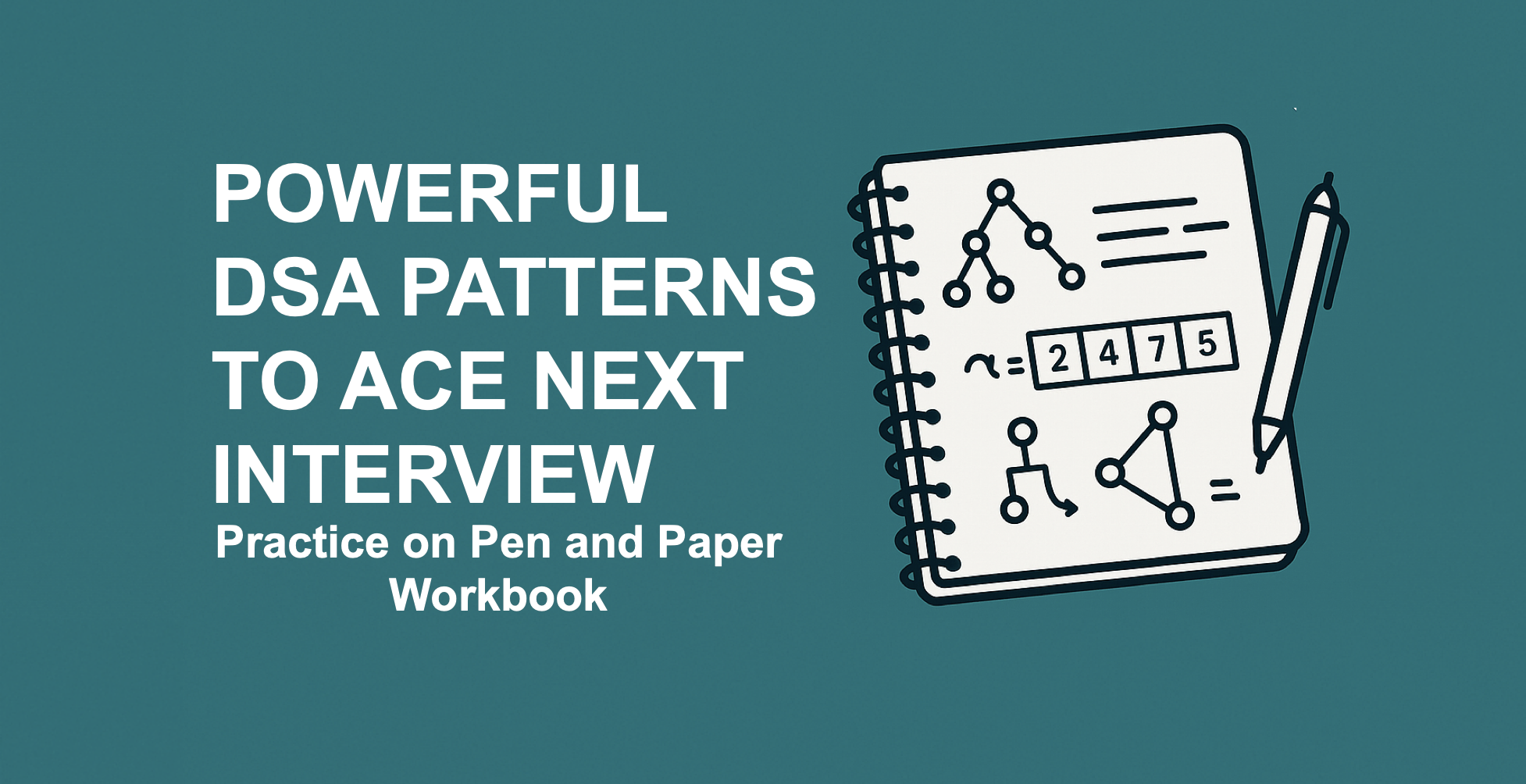The DSA Pattern Workbook

About Course
Unlock the true power of pattern-based problem-solving in Data Structures and Algorithms—without writing a single line of code.
In this unique course, you’ll explore over 16 curated DSA patterns through downloadable, printable worksheets designed specifically for offline, pen-and-paper practice. Instead of jumping straight into code, you’ll strengthen your algorithmic thinking through deliberate, low-distraction exercises that mimic whiteboard interviews and real-world design challenges.
🔬 Why Pen & Paper? The Science Behind It
Modern research in cognitive psychology and neuroscience shows that writing by hand activates deeper levels of brain processing compared to typing. When you sketch out solutions manually.
Remember how we learned in school — notebooks open, pen in hand, focused without distractions?That same method still works. In fact, research shows that writing things down helps with retention.
-
🧠 Improve Memory Retention: Handwriting strengthens neural encoding and helps store information in long-term memory more effectively.
-
🔄 Boost Conceptual Understanding: Solving algorithms visually and sequentially builds intuition and encourages abstraction.
-
🚫 Eliminate Digital Distractions: Practicing offline creates a focused learning environment free of popups, syntax errors, or autocomplete crutches.
-
🎯 Prepare for Real Interviews: Top tech interviews often require whiteboard problem-solving—pen-and-paper practice trains you for this format.
-
🛠️ Strengthen Problem Decomposition Skills: Sketching forces you to break problems into logical chunks and plan before executing—a crucial habit in real-world software design.
🧩 What You’ll Get:
-
✅ Downloadable worksheets covering 16 key DSA patterns
-
✅ Space to dry-run test cases, draw memory models, and sketch solutions
-
✅ Step-by-step pattern templates (e.g., sliding window, two pointers, backtracking)
-
✅ Tracker sheets to monitor your mastery and retention
Course Content
✨ Course Introduction: Mastering Coding Patterns with Pen & Paper
-
Mastering Coding Patterns with Pen & Paper
🔰 1: Foundational Patterns
🌳 2: Trees & Graphs
🧮 3: Intermediate Logic
🧩 4: Advanced Dynamic Programming
Student Ratings & Reviews

